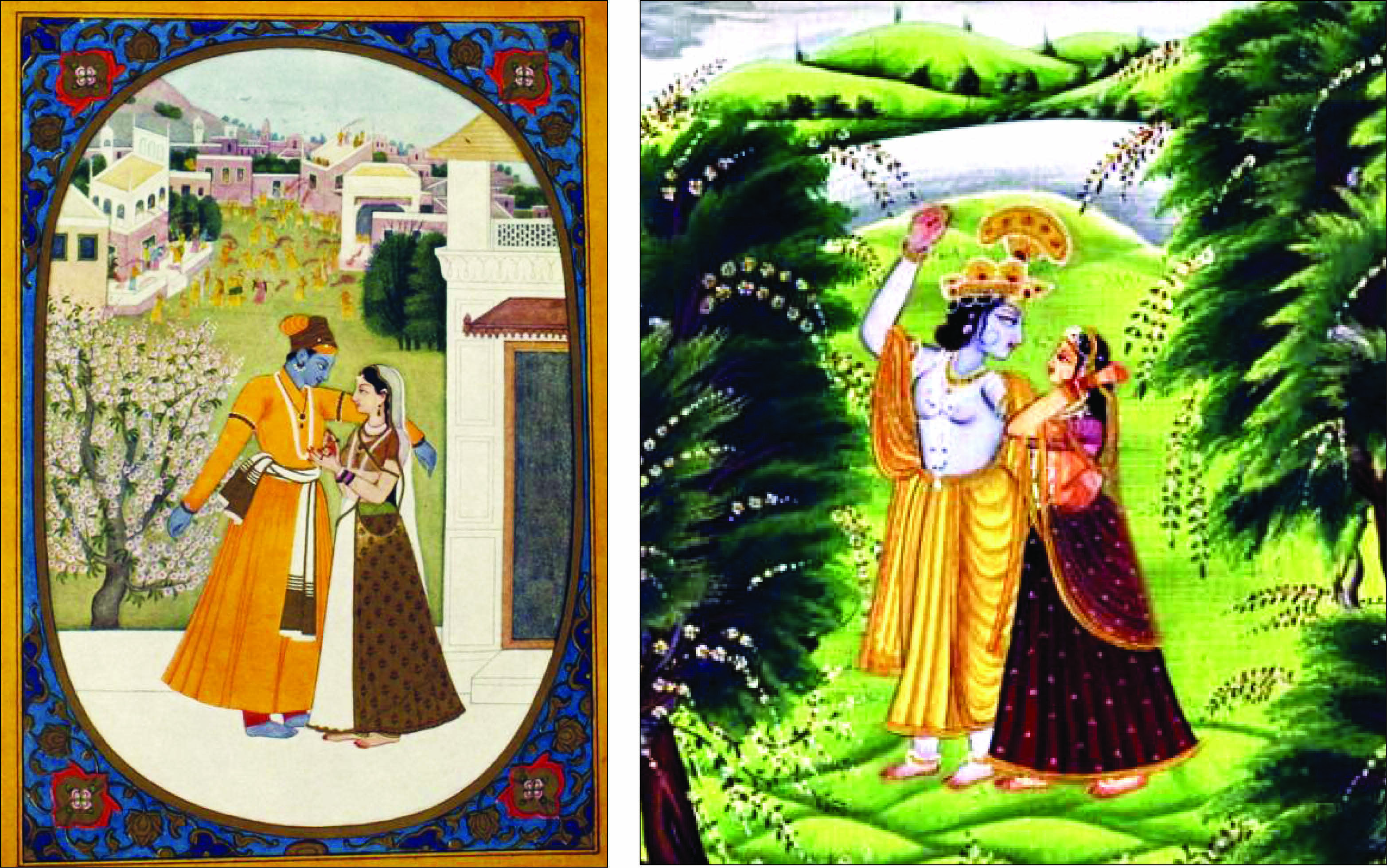Uniquely alluring
Primarily depicting Radha-Krishna love story, Kangra Paintings underwent radical experimentation with time, transforming into a more refined version

What Chinese art achieved for landscape, is here (in Kangra paintings) accomplished for human love. Here if never and nowhere else in the world, the western gates are open wide. The arms of lovers are about each other's neck. Eye meets eye, the whispering sakhis speak of nothing else but the course of Krishna's courtship, the very animals are spell-bound by the sound of Krishna's flute, and the elements stand still to hear the raga and raginis.
"The heroine's eyes are large as any lotus flower, her tresses fall in heavy plaits, her breasts are firm and high, her thighs are full and smooth, her hands like rosy flowers, her gait as dignified as any elephant's and her demeanour bemuse."
—Anand K Coomaraswamy
The 'Vishnudharmottar Purana', written in the 5th CE, has a section dedicated to 'Chitrasutra' — the description of paintings of the Kangra valley, especially the motifs, themes and raw materials used by the artists. The tradition of Kangra painting reached its zenith in the princely state of Guler, especially under the patronage of Maharaja Sansar Chand (1765-1824). Because of the patronage of the Guler kings, their names are proudly mentioned as the 'patrons of art' even though many other contemporary kingdoms and princely states far exceeded them in terms of material wealth or military might.
It is true that in the immediate aftermath of the Independence, there was a noticeable decline in this art form as they had lost their primary patrons – the Maharajas of yore. However, when Himachal achieved statehood in 1971, and tourism got a boost, there was a revival of interest in this art form. The government too extended its support by establishment of the Museum of Kangra Art in January 1990 at Dharamshala. Later, a Kangra Arts Protection Society (KAPS) was established in 2008 under the then Divisional Commissioner of Kangra, BK Agarwal. KAPS addressed all the concerns of the artists: supply of raw materials, introduction of new designs, adaptation of design for niche markets and retail outlets at the emporia of the Himachal government. Later, the HP Council for Science, technology and environment (HIMCOSTE) helped in obtaining the Geographical Indicator status for Kangra paintings in 2014.
Let's delve into the history of the Kangra school of painting which came into existence after the gradual decline of the Basohli art style in the middle of the 18th century. This art form received patronage from the Rajas of Guler, notably Duleep Singh who gave refuge to a family of Kashmiri painters fleeing Delhi after the invasion of Nadir Shah. From Guler, it spread to Bilaspur, Nurpur, Kangra and Kullu. Soon, the local artists came to be heavily influenced by the new style of paintings and began experimenting with it. The extant painting tradition of depicting love stories and portrait pictures of kings and their queens came
to be replaced by more scenes involving nature and the divine romance of Radha and Krishna, especially during the reign of Maharaja Sansar Chand, who was known for his fervent devotion towards Lord Krishna. It is said that he used to pay artists handsomely to depict scenes from the lifetime of Lord Krishna. It is from here that the Kangra began to be known as one of the most alluring and unique art forms of India. This is known as the early phase of Kangra Kalam. The colours were extracted from minerals, vegetables and possessed enamel-like lustre.
As can be well imagined, the subjects seen in Pahari paintings exhibited the tastes and traits of the lifestyles of the society of that period. The Bhakti cult was the driving force, and the love story of Radha and Krishna was the main source of spiritual experience, which was also the base for the visual expressions. 'Bhagavata Purana' and the love-poems 'Gita-Govindan' of Jaideva were the most popular subjects dealing with the legends and the amorous plays of Radha and Krishna symbolising soul's devotion to God. In some miniatures, the blue-God Krishna is seen dancing in the lush woodlands and every maiden's eyes are drawn to him. The Kangra school was also marked by the extensive usage of natural elements in the paintings such as creepers, trees, flowering plants, rivers along with the repetitive use of the colour green and its numerous shades. With further developments in the art form, Kangra artists began depicting harsher scenes in their paintings such as thunder, lightning strokes, and heavy rain.
The credit for bringing this work to the global art aficionados goes to Anand Coomaraswamy and later to art historian BN Goswami, as well as Benoy K Behal. In fact, Coomaraswamy was the first scholar who appreciated and introduced "Rajput painting" to the western world as an intimate and immediate expression of the Hindu view of life'. It now adorns art museums and private collections across the world. The GI tag has also ensured that there is greater respect and recognition of the artists who are preserving this tradition.
Views expressed are personal



